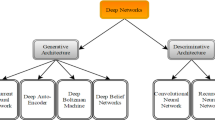Abstract
Anomaly-based detection is a novel form of an intrusion detection system, which has become the focus of many researchers for cybersecurity systems. Data manages most business decisions. With more access to data, it is necessary to interrupt and analyze them correctly. When it comes to security, the first step is to determine the outliers as a security threat. Machine learning and deep learning techniques have proven to recognize anomalous attack patterns that deviate from normal network behavior. Machine learning can be utilized to learn the characteristic of data and help to improve the speed of detection. In this research, we present our approach to implementing an algorithm for the anomaly detection framework in complex and unbalanced data. The proposed method has been applied to a CSE-CIC-IDS2018 dataset. It is the most recent dataset that is publicly available, an extensive dataset that includes a wide range of attack types. This data has been pre-processed and cleaned to find helpful information for classification by the proposed models. We performed a correlation methodology to filter irrelevant anomalies and grouped the correlated anomalies into a single feature to minimize detection time. A stacked autoencoder has been used to reduce the dimensionality of the dataset. We exploited different machine learning algorithms such as (Random Forest, GaussianNB, and multilayer perceptron) to classify the streamed data. Our experimental results outperformed the superiority of the proposed approach to identify anomalous components and manage threat detection in cybersecurity applications.
Access this chapter
Tax calculation will be finalised at checkout
Purchases are for personal use only
Similar content being viewed by others
References
Cerullo, G., et al.: Iot and sensor networks security. In: Security and Resilience in Intelligent Data-Centric Systems and Communication Networks, pp. 77–101. Academic Press, Cambridge (2018)
Tu, S., et al.: Security in fog computing: A novel technique to tackle an impersonation attack. IEEE Access 6, 74993–75001 (2018)
Kim, J., Shin, Y., Choi, E.: An intrusion detection model based on a convolutional neural network. J. Multimedia Inf. Syst. 6(4), 165–172 (2019)
D’hooge, L., et al.: Classification hardness for supervised learners on 20 years of intrusion detection data. IEEE Access 7, 167455–167469 (2019)
Stiawan, D., et al.: CICIDS-2017 dataset feature analysis with information gain for anomaly detection. IEEE Access 8, 132911–132921 (2020)
Guezzaz, A., et al.: A global intrusion detection system using pcapsocks sniffer and multilayer perceptron classifier. Int. J. Netw. Security. 21(3), 438–450 (2019)
Thaseen, I.S., Poorva, B., Ushasree, P.S.: Network intrusion detection using machine learning techniques. In: 2020 International Conference on Emerging Trends in Information Technology and Engineering (ic-ETITE). IEEE (2020)
Beghdad, R.: Training all the KDD data set to classify and detect attacks. Neural Netw. World 17(2), 81 (2007)
Thakkar, A., Lohiya, R.: A review of the advancement in intrusion detection datasets. Procedia Comput. Sci. 167, 636–645 (2020)
Yulianto, A., Sukarno, P., Suwastika, N.A.: Improving adaboost- based intrusion detection system (IDS) performance on CIC IDS 2017 dataset. J. Phys.: Conf. Ser. 1192(1) (2019)
Kurniabudi, D.S., Darmawijoyo, M.Y.B., Bamhdi, A.M., Budiarto, R.: CICIDS-2017 dataset feature analysis with information gain for anomaly detection. IEEE Access 8, 132911–132921 (2020). https://doi.org/10.1109/ACCESS.2020.3009843
Kanimozhi, V., Jacob, T.P.: Artificial intelligence-based network intrusion detection with hyper-parameter optimization tuning on the realistic cyber dataset CSE-CIC- IDS2018 using cloud computing. In: 2019 international conference on communication and signal processing (ICCSP). IEEE (2019)
Kim, J., et al.: CNN-based network intrusion detection against denial-of-service attacks. Electronics 9(6), 916 (2020)
Kilincer, I.F., Ertam, F., Sengur, A.: Machine learning methods for cyber security intrusion detection: datasets and comparative study. Comput. Netw. 188, 10784 (2021)
Ali, M.H., et al.: A new intrusion detection system based on fast learning network and particle swarm optimization. IEEE Access 6, 20255–20261 (2018)
Dini, P., Saponara, S.: Analysis, design, and comparison of machine-learning techniques for networking intrusion detection. Designs 5(1), 9 (2021)
Bagui, S., et al.: Using machine learning techniques to identify rare cyber-attacks on the UNSW-NB15 dataset. Security and Privacy 2(6), e91 (2019)
Aboueata, N., et al.: Supervised machine learning techniques for efficient network intrusion detection. In: 2019 28th International Conference on Computer Communication and Networks (ICCCN). IEEE (2019)
Kim, J., Shin, Y., Choi, E.: An intrusion detection model based on a convolutional neural network. J. Multimed. Inf. Syst. 6, 165–172 (2019)
Farhan, R.I., Abeer, T.M., Nidaa, F.H.: Optimized deep learning with binary PSO for intrusion detection on CSE-CIC-IDS2018 dataset. J. Al Qadisiyah Comput. Sci. Math. 12, 16 (2020)
Lin, P., Ye, K., Cheng-Zhong, X.: Dynamic network anomaly detection system by using deep learning techniques. In: Da Silva, D., Wang, Q., Zhang, L.-J. (eds.) Cloud Computing – CLOUD 2019: 12th International Conference, Held as Part of the Services Conference Federation, SCF 2019, San Diego, CA, USA, June 25–30, 2019, Proceedings, pp. 161–176. Springer International Publishing, Cham (2019). https://doi.org/10.1007/978-3-030-23502-4_12
Author information
Authors and Affiliations
Corresponding author
Editor information
Editors and Affiliations
Rights and permissions
Copyright information
© 2023 The Author(s), under exclusive license to Springer Nature Switzerland AG
About this paper
Cite this paper
Elhanashi, A., Gasmi, K., Begni, A., Dini, P., Zheng, Q., Saponara, S. (2023). Machine Learning Techniques for Anomaly-Based Detection System on CSE-CIC-IDS2018 Dataset. In: Berta, R., De Gloria, A. (eds) Applications in Electronics Pervading Industry, Environment and Society. ApplePies 2022. Lecture Notes in Electrical Engineering, vol 1036. Springer, Cham. https://doi.org/10.1007/978-3-031-30333-3_17
Download citation
DOI: https://doi.org/10.1007/978-3-031-30333-3_17
Published:
Publisher Name: Springer, Cham
Print ISBN: 978-3-031-30332-6
Online ISBN: 978-3-031-30333-3
eBook Packages: EngineeringEngineering (R0)




